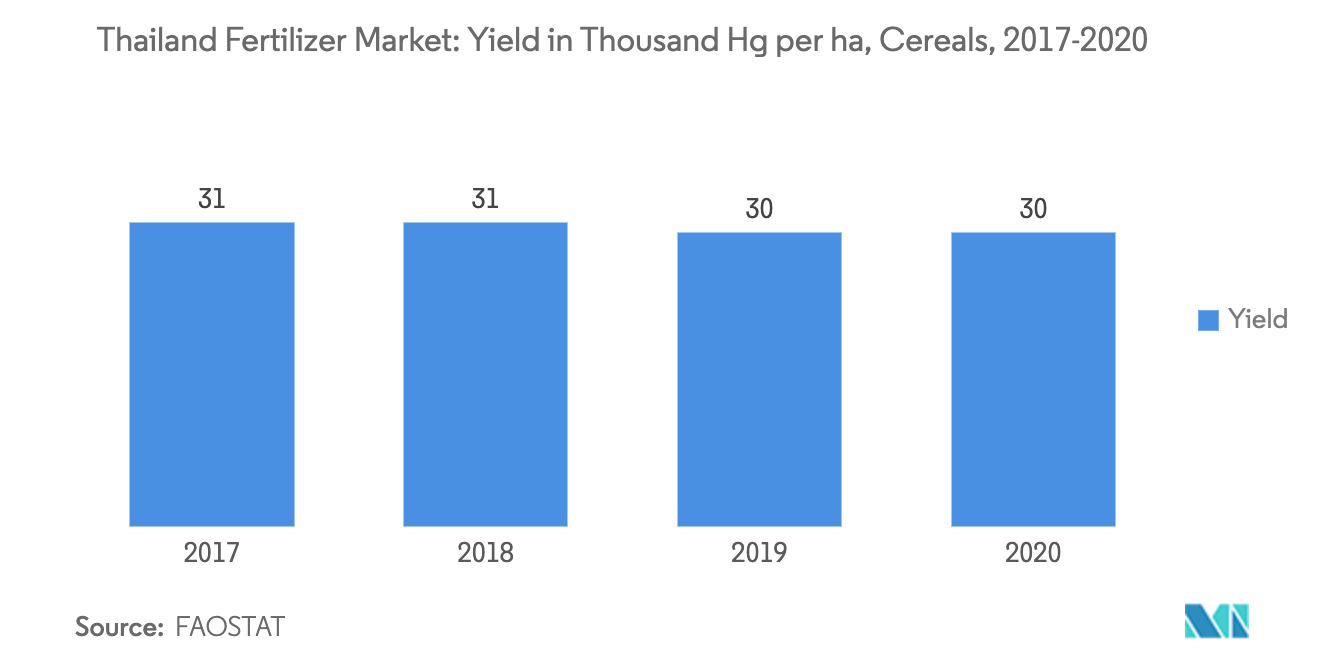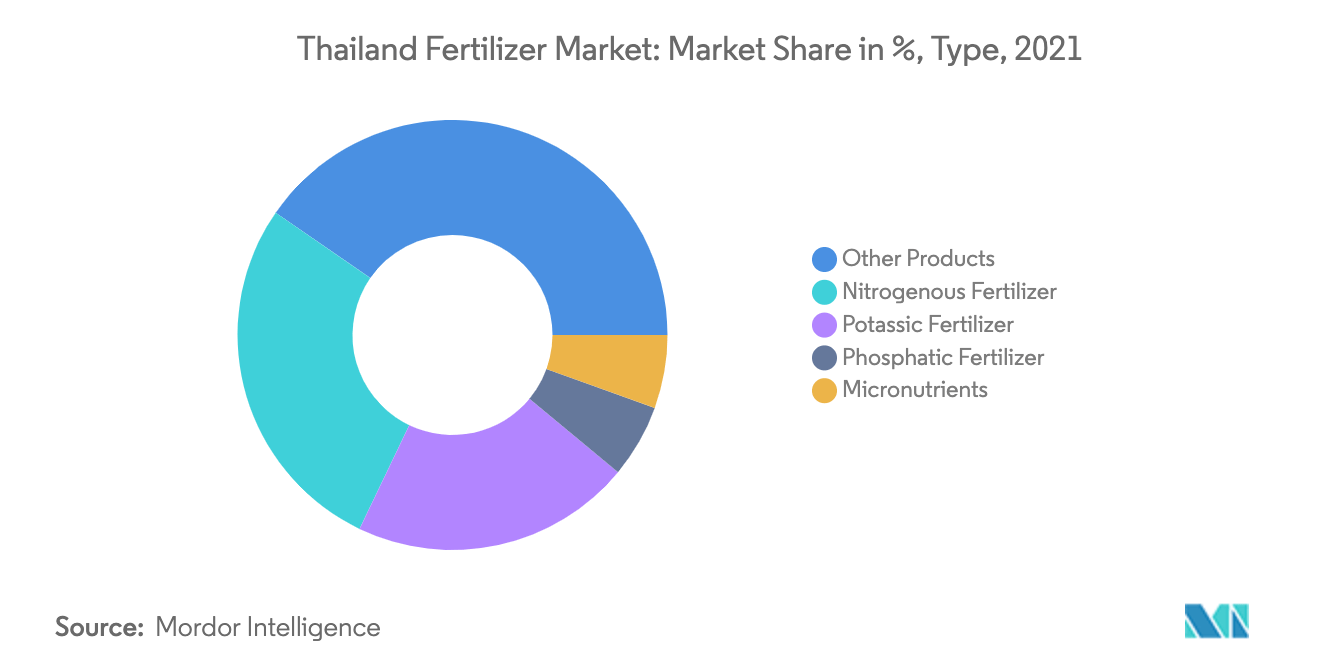Market Trends of Thailand Fertilizers Industry
This section covers the major market trends shaping the Thailand Fertilizers Market according to our research experts:
Need for Increasing Agricultural Productivity
Despite the unchanged agricultural land in the country, agricultural productivity in Thailand is showing positive increment over the year. According to FAOSTAT, the cereal production in the country was 38,175,650.0 metric ton in 2017, which has reached 35,507,800.0 thousand metric ton in 2020. This decrease in agricultural production in the country is will lead to increased adoption of various agricultural products and technologies, including fertilizers.
The arable land in Thailand holds nearly 32.9% of the total land area in 2018, according to the world bank data. The largest number of farm holdings are located in the Northeastern region. In the region, along with the insufficient supply of land, some other factors, such as poor-quality soil, seasonality, variability of rainfall, scarcity of surface water, etc. Therefore, fertilizer application has become crucial to achieving higher productivity gains.
In order to boost the agriculture production in the country, the Thailand Government has supported the farmers by providing subsidies on-farm inputs. For instance, in 2019, the government announced to launch of new stimulus measures for Thai farmers in the form of cheap fertilizers. This measure will be included on the state welfare smartcard, to provide the subsidy directly to the holders. With the increasing agriculture production coupled with various government schemes, the demand for fertilizers in the country is expected to grow during the study period.

Nitrogenous Fertilizer Dominates the Market
Fertilizer use in Thailand is an integral part of agriculture, due to the declining availability of arable land and the increasing role of agricultural commodity exports in the economy. However, Thailand has a limited supply of raw materials for fertilizer, and therefore, the imports of both raw materials and pre-compounded grades for domestic production and distribution are high.
Most of the soil in Thailand is nitrogen deficient, due to the dominance of rice crops. Thus, nitrogenous fertilizers are the most frequently used, especially urea. Ammonium sulfate (AS) provides critical plant nitrogen (N) and sulfur (S) nutrients, compared to other N fertilizers, as ammonium sulfate has agronomic and environmental benefits against toxicity (aqueous NH3), N loss via NH3 volatilization, etc. Ammonium sulfate is another widely used nitrogenous fertilizer, only after urea, in Thailand.
Some of the major crops for which nitrogen is used include corn, cassava, and sugarcane which are all the key crops grown in the country. Urea is among the most imported fertilizers in Thailand, as it is the most widely used fertilizer. Chia Tai has a greater presence in the single-nutrient fertilizer urea market, because it has access to high quality urea from Russia. According to the Food and Agriculture Organization (FAO), value of urea imported in Thailand, in 2017, stood at USD 643,472.0 thousand, which has consistently increased to reach USD 903,877.0 thousand by 2021. Thus, the demand for nitrogen fertilizers in the country is anticipated to grow over the forecast period.

